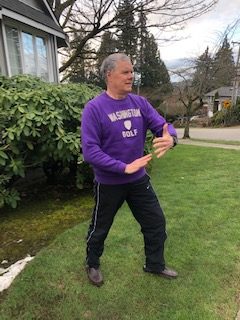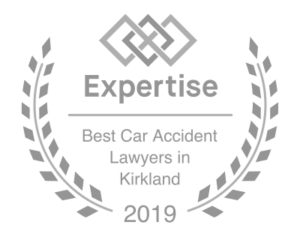 Disfigurement damages are the easiest to prove, but the proper demonstration of disfigurement is often misunderstood.
Disfigurement damages are the easiest to prove, but the proper demonstration of disfigurement is often misunderstood.
Disfigurement. Disfigurement includes scars, missing body parts, deformed body parts, skin color changes, loss of hair, and any disturbing visual change to the body resulting from injury.
Most Important Body Parts. The most significant disfigurement cases involve the face. Our face is what we show the world. Our face is how we are first perceived. A facial disfigurement case is a substantial injury case. Second to our face is our hands. We can cover all parts of our body outside of our face and hands without being perceived as unusual. Arm and leg disfigurement is also difficult to hide especially arm disfigurement. In essence any disfigurement that is readily apparent and often exposed is a significant injury.
Sex and Age. As a general rule, disfigurement on a women is a more significant then the same disfigurement on a man. Generally, disfigurement on a young person is a more significant then the same disfigurement on an older person. These realities are the realities of society and society members are who will be on your jury.
Demonstrating Disfigurement. The most important aspect of a disfigurement case is demonstrating disfigurement. The great trial lawyer Howard Nations says it best:
– Jurors are Subject to the Anesthetizing Effect
The better part of wisdom dictates that when a severely injured Plaintiff is being presented to a jury, the less time the jury can actually observe the victim, the stronger effect the injuries will have on the jurors. Long term and constant exposure to a severely injured person causes an anesthetizing effect with…jurors who become accustomed to the injuries and less empathetic with them as time progresses.
For example, a seriously burned individual who has horrendous scarring may cause jurors to look away upon first contact. However, if that person sits in the [court] room in sight of the jurors…for several days of trial, by the time the jurors enter the jury room to deliberate on damages, they will be anesthetized to the damage and will not view it as tragically as they would have upon initial contact.
From the Plaintiff’s viewpoint, the wiser course is to bring the seriously injured victim in to introduce to the panel on voir dire examination. Then ask the court that the person be excused and not have them return until they are called to the witness stand to testify. After testifying, they should not be seen again by the jury… .
The absence of the Plaintiff during the trial can be explained by a medical witness or psychologist who will testify that it is in the best interest of the Plaintiff not to hear the testimony concerning the accident either from the viewpoint of reliving the horrors of the events or hearing testimony about the devastating long term effects… . (Howard Nations, Powerful Persuasion)
Separate Element. As with all of our elements of general damage, disfigurement is a separate element. It must be segregated for the jury. Care must be taken in doing this and assigning a separate value. We only have one opportunity to get fairness for our injured client. Our injured client lives the rest of her life with her injuries.
Post Footer automatically generated by Add Post Footer Plugin for wordpress.


 A few years ago I read Eckhart Tolle, The Power Of Now. This week I am reminded of his book. The premise is simple. Live in the present. As Tolle explains we have a choice to continue to rehash the past either condemning yourself for past mistakes or reliving past glory days; live in the future usually by telling yourself if this and that happen I will be happy; or, live in the present. By far the hardest of the three choices is to live in the now. This is because mentally it is easier to live in the past or imagine the future.
A few years ago I read Eckhart Tolle, The Power Of Now. This week I am reminded of his book. The premise is simple. Live in the present. As Tolle explains we have a choice to continue to rehash the past either condemning yourself for past mistakes or reliving past glory days; live in the future usually by telling yourself if this and that happen I will be happy; or, live in the present. By far the hardest of the three choices is to live in the now. This is because mentally it is easier to live in the past or imagine the future. I just finished a three day seminar taught by Bob Dawson and Mark Wagner. Both are successful personal injury lawyers. Both are graduates of
I just finished a three day seminar taught by Bob Dawson and Mark Wagner. Both are successful personal injury lawyers. Both are graduates of  Disfigurement damages are the easiest to prove, but the proper demonstration of disfigurement is often misunderstood.
Disfigurement damages are the easiest to prove, but the proper demonstration of disfigurement is often misunderstood. The separate element of loss of enjoyment (of life) as a component of general damages is an example of how the law is a moving stream and how
The separate element of loss of enjoyment (of life) as a component of general damages is an example of how the law is a moving stream and how Suffering is different than pain and the two are distinct general damages. Disability is a third distinct general damage. The Americans with Disabilities Act defines disability as a physical or mental impairment that substantially eliminates one or more major activity. 42 USC sec 12101-17 (1992). Recovery for disability compensates for the inability to lead a normal life. Kirk v. WSU, 109 Wn.2d 448, 461, 746 P.2d 285, 292 (1987
Suffering is different than pain and the two are distinct general damages. Disability is a third distinct general damage. The Americans with Disabilities Act defines disability as a physical or mental impairment that substantially eliminates one or more major activity. 42 USC sec 12101-17 (1992). Recovery for disability compensates for the inability to lead a normal life. Kirk v. WSU, 109 Wn.2d 448, 461, 746 P.2d 285, 292 (1987